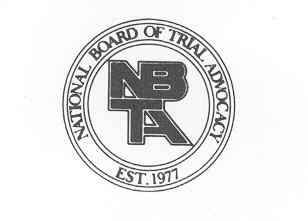Last week, I explained the clinically designed purpose of the Romberg Balance Test and how in a meaningful way it has never even been facially validated for its intended or purported purpose as a method of recording drug-related impairment in DUID cases, but rather is used as a neurological screening test to rule-out in only a preliminary way brain damage.
In that post I concluded that
Like many tests used at roadside [or in the DRE protocol], the designed and intended use of a legitimate and useful clinical screening test has been literally bastardized and hijacked by police to now be used as a supposed indicator for possible alcohol or drug impaired driving.
With this post, I would like to examine another step in the Drug Recognition Expert (DRE) protocol, the Finger-to-Nose test in the same way to see if the same conclusion is arrived.
We start with a little etomolgy…
Unlike the Romberg Balance test, there is no identified creator of the Finger-to-Nose test. Perhaps it will never be known and will relate back to the age old childhood developmental task of process identification.

However, what is well known is the scores of clinical research published in peer-reviewed treatises that have successfully and validly linked the clinical use of the Finger-to-Nose test to be used as a neurological differential diagnosis tool.
What is a differential diagnosis tool?
The medical term of art "differential diagnosis tool" means that a systematic method is used to identify unknowns.
The term differential derives from the word difference: careful differential diagnosis involves first making a list of possible diagnoses, then attempting to remove diagnoses from the list until at most one diagnosis remains. In some cases, there will remain no diagnosis; this suggests the physician has made an error, or that the true diagnosis is unknown to medicine. Removing diagnoses from the list is done by making observations and using tests that should have different results, depending on which diagnosis is correct.
In other more crude words, it is the process of elimination.
Moreover, and perhaps more importantly, the clinical use of the Standardized Finger-to-Nose test (SFTN) differs substantially from the police officer administered one.
For the police officer administered one, the subject is commanded to stand with his/her arms out horizontally parallel to the ground and in a fashion consistent with making a "T" when one were to look directly ahead at the test subject. He/she will be commanded to keep his or her feet together. Then, remarkably with his/her eyes closed, he/she will then be ordered to take one hand at a time listening to the officer’s command, and place it straight out in front of the subject’s body, then bending the arm directed at the elbow forward, move to touch the tip of the finger to the tip of the nose. Then back to the ready "T" position to repeat. [Editor’s note: Please refer to the comments section of this post to see the complete comment and reply between myself and Thomas Page for a full discussion into the correct and incorrect test administration- a thank you to Mr. Page for helping me make a complete and wholly accurate post.]
Some of the problem with the DRE variation of the Finger-to-Nose test is in the explanation. One of the instructions is for the test subject is to use only the tip of his/her index finger to touch the nose. Most people, even sober people, misinterpret this instruction and use the pad of the finger as a substitute.
Here is the clinically valid administration of the Finger-to-Nose test.
-Justin J. McShane, Esquire, Pennsylvania DUI Attorney
I am the highest rated DUI Attorney in PA as Rated by Avvo.com
You can follow me on Twitter, Facebook or Linkedin

Board Certified Criminal Trial Advocate
By the National Board of Trial Advocacy
A Pennsylvania Supreme Court Approved Agency
Thomas Page says:
The test you describe is NOT the one police are trained to use. The subject does NOT make a “T” with his arms. (To be forthright, however, many officers incorrectly administer the test as you describe.) Rather, he/she stands with the arms down at the side – perpendicular to the ground, palms facing out.
A primary benefit of this test is that the officer may discover signs of medical impairment, such as that caused by a stroke, if the person has difficulty touching his nose with one hand and not the other.
Harrisburg DUI Lawyer says:
Thank you for the comment. Thank you for your willingness to contribute.
You are correct. In re-reading my post I was not comprehensive or accurate. What I intended to describe and issue an anecdote about is the incorrect version. The Lycoming County Central DUI booking is notorious for administers the test in this incorrect manner. A forming of a “T” is the wrong way. I have adjusted the post accordingly referring to this comment.
Here it is in its full correct instruction:
FINGER TO NOSE
The Finger to Nose test means just that: the subject is required to bring the tip of the index finger up to touch the tip of the nose. They will preform this test with their eyes closed and the head tilted slightly back, standing in a manner identical to that required for Romberg Balance (feet together and arms at their sides). The subject will attempt this six times, three with each hand. You will instruct the subject as to which hand to use for each attempt. You will always use this sequence when administering this test: “left…right…left…right…right…left”.
Administrative Procedures
o Tell the subject to place their feet together and to stand straight.
o Tell the subject to place their arms down by their sides, make a fist with the index finger extended and rotate the palms forward.
o Tell the subject that, when you say to “begin”, they tilt their head back slightly and close their eyes. DEMONSTRATE how the head should be titled back, but DO NOT CLOSE YOUR EYES.
o Inform the subject that you will instruct them to bring the tip of an index finger up to touch the tip of their nose. DEMONSTRATE how the subject is supposed to move the arm and how they are supposed to touch the tip of the nose.
NOTE: The arm is brought directly from the subject’s side in front of the body touching the tip of the nose with the tip of the index finger.
o Tell the subject that, as soon as they touch their finger to their nose, they must return the arm to their side.
o Tell the subject that, when you say “right”, they must move the right hand index finger to their nose; when you say “left”, the subject must move the
left hand finger to their nose.
o Ask the subject if they understand.
o Tell the subject to “begin”. MAKE SURE they tilt their head back and close their eyes. EMPHASIZE to the subject that they must keep their eyes closed until you say to open them.
o Give the commands in EXACTLY this sequence:
“left…right…left…right…right…left”.
MAKE SURE the subject returns the arm to their side immediately after each attempt. PAUSE about two or three seconds between commands.
o After the sixth attempt, tell the subject to open their eyes.
It still is not the nuerological screening method as developed by neurologists.
I have about 8 DEC/DRE manuals and even a few of the instructor ones (the ones that I can get through FOIA or RTK as they are protected by and large) and no where that I read in them is there instruction that the officer is to use this test as part of a neurological screening. Can you point me to the section and page number of the NHTSA approved text?
I would like to learn that if it is in print.
_________________
-Justin J. McShane, Esquire, Harrisburg DUI Lawyer